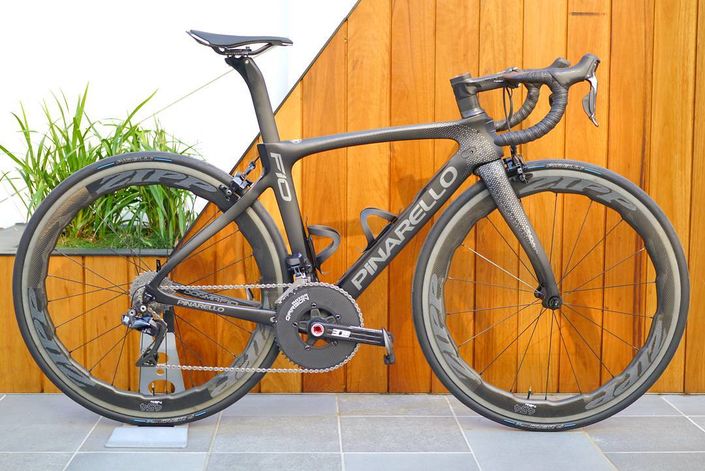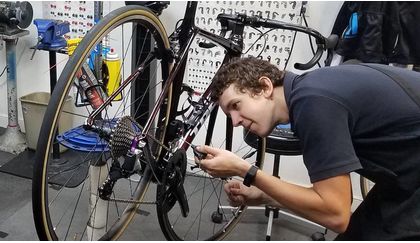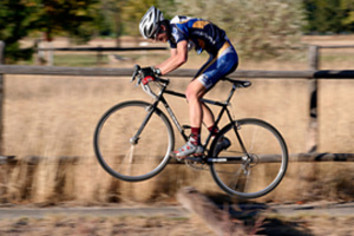
Purchasing a new road bike is a big decision. If you have not owned a road bike previously it can be quite daunting.
By now you should have immersed yourself in specifications, styles of bikes available, frame materials, and all the other intricacies of the wonderful world of cycling.
You have decided what bike you are going to buy, but they are expensive and they look so fragile. You have lots of questions in your mind:
Do I have to wear lycra? Do I have to ride with other people? How do I fix a flat tire?
Well, we won't answer any of these questions here, we are just going to look at how you look after your new toy. Below are a few dos and don'ts for all road bikes, regardless of whether they're carbon, aluminum or steel.
General bike care
Read the manual
When you get your bike home, make sure you read through the manual before your first ride. This will give you a lot of information from the manufacturer on how to take care of your bike, with information specific to the type of bike you have bought. It will also tell you what is and isn't covered under warranty.
Free first service / tune-up

Most local bike shops offer a free first service after your first month of ownership. Book it in right away and get it done. Cables on a brand new bike will stretch as they break in, affecting shifting and braking. Brakes are important for obvious reasons. As for shifting, when it's not properly serviced, it can be extremely frustrating; you'll experience ghost changes, gears slipping / not changing, noise, etc., all of which makes riding no fun at all.
Once you have had your first service you should be right to go for quite a while.
The drop test
This shouldn't have to be done if your bike has come straight home from the shop, but every once in a while it is a good idea to pick your bike up about 10 cm off the ground and drop it evenly onto both wheels. If anything rattles strangely or falls off, it needs fixing.
Over time you will learn the sounds that a drop test should make. The chain and cables will rattle a bit, but if anything else rattles you'll want to find where the rattle is coming from and probably need to tighten it up.
Chain lube
When you buy your bike, grab some lightweight, dry chain lube while you are there. As the chain is the part of the bike that gets the most wear, it's well worth being prudent and lubing your chain on a regular basis to prolong its life.
I am not going to say how often you should do this as this depends on several factors, such as how often you ride, the conditions you ride in, and where your bike is stored.
Keep it clean
A clean bike is a fast bike. Although this is really just a saying, there is some truth to it. After every ride I give my bike a quick wipe down. I keep a rag in the garage where I park the bike and it only takes a couple of minutes.
This enables me to know what state my bike is in, alerting me to any unusual wear or cracks in the frame. I have found one before and believe me, the last thing you want to have happen is for your frame to break when you are descending.
It also helps when servicing or cleaning the bike as there will not be as much of a build up of grit, grease and dirt. Learning how to degrease your chain and cassette is also a worthwhile skill. This is an area that has a high build-up of grime and is the mechanical part that drives the bike, so keeping it clean will reduce friction and make your bike faster.
Riding the bike
In general, road bikes are not as fragile as you might think. Just watch some YouTube videos of the Paris-Roubaix classic and you'll see what they put their bikes through! The most fragile part of your bike is the wheels. Try to avoid hitting any obstacles, potholes, stones, tree branches, and of course, cars.
You will get better at this with practice. When you first start riding you may have to get your wheels trued (buckles taken out) a couple of times in the first year, but over time you will learn how to look after them. Practice doing some bunny hops on a quiet, safe road.
This skill will help if you see something last minute and cannot avoid hitting it - a quick bunny hop is normally effective and is certainly less stressfull than hitting a rock.
If you need to lie the bike down, lie it bike down with the derailleur / drive side facing up. This will prevent the derailleur hanger bending and effecting how your gear operates.
It goes without saying, but jumping up and down curbs, wheelstands, endo, skids etc. are all best to be avoided. I have learnt this the hard way. They are all possible on a road bike but it will not appreciate it. If you wish to ride like that, then is definitely best to look at owning a second bike to have fun on.
While it may seem like a lot to take on at first, over time you'll find that looking after your bike properly will become almost second nature. Establishing a regular maintenance routine will not only make servicing easier, it will extend the life of your bike and make mechanical failure a lot less likely.
Have you got any other maintence tips worth mentioning? If so, please share them in the comments below.

RELATED ARTICLE:
6 ways to make road cycling more fun
Bicycling is fun! Use these six tips to make it funner and better, especially if you need a little help getting your cyclist joy compass or thrill meter tuned up and ready to ride... READ MORE

RELATED ARTICLE:
5 things you must do after riding your road bike in the rain
A little rain never hurt anyone, maybe, but is your bike really so tough? These simple steps are crucial in looking after your road bike... READ MORE



